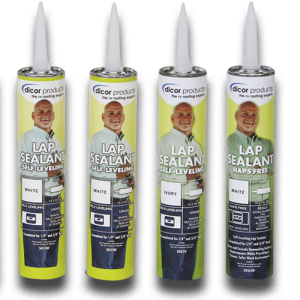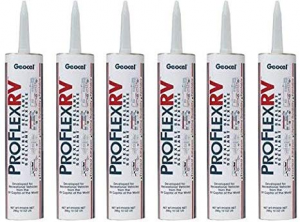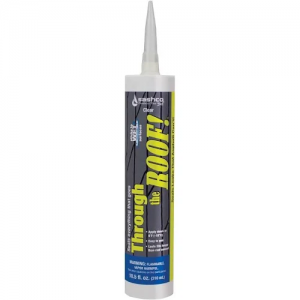Tips, tricks and advice about basic RV and motorhome roof maintenance
Owning a recreational vehicle (RV) or class B motorhome is one of the best ways to ensure you’re never too far from excitement and travel. Purchasing a campervan is your gateway for easy weekend excursions and well-planned month-long journeys.
If you’re thinking about buying an RV or are already an owner of one, you may be thinking about maintenance. Many experienced road trip warriors will tell you that maintenance is important, but it doesn’t have to be difficult. Several components of maintenance are electrical, tire care, winterizing your vehicle and, last but not least, making sure your roof is in good condition.
The roof of your recreational vehicle (RV), motorhome or campervan is one of the most vital parts, yet it’s often neglected when it comes to maintenance.
Out of sight, out of mind…right?
Not so much…
One of the best things about traveling by RV versus tent camping is your roof. Motorhomes withstand most of Mother Nature’s elements and will keep you dry and comfortable all through the night. Making sure your roof is in tip-top shape can make all the difference depending on where you decide to travel.
The roof protects you and everything inside your rig from rain and dust. Unfortunately, many ignore the roof until wear and tear start showing—at which point the damage is already done and a costly roof replacement may be necessary.
If you would like your travel vehicle to serve you for many miles, then be sure to keep reading for some basic advice on necessary maintenance procedures for your RV or motorhome roof.
Why should you take care of your roof?
If you own a motorhome, then maintenance should be a top priority, especially when it comes to your roof. You should schedule roof maintenance at least once or twice a year. Don’t ignore any slight damage to your roof because it can turn out to be an expensive job if it punctures the rubber lining of your roof.
Your roof is likely made of rubber material. Just like any other material, it needs routine preventive maintenance. Neglecting will lead to unnecessary repair costs. Routine inspection potentially saves you hundreds of dollars emanating from expensive repairs.
Types of Motorhome Roofs
The four most common types of material used for RV roofing are rubber, fiberglass, vinyl and aluminum. Your roof type will determine how you maintain it.
- Rubber: Rubber roofing will generally last as long as you maintain it. There are two types of rubber roofs: EPDM (ethylene, propylene, diene monomer) and TPO (thermal, polyolefin). Depending on which type you have, maintenance may be a little different (see below).
- Fiberglass: A fiberglass roof is typically the easiest type of surface to maintain. Fiberglass roofs are heavy though, which makes them infrequently used in the production of motorhomes.
- Vinyl: A vinyl roof requires similar maintenance to that of a rubber roof. However, always be sure to check the owner’s manual for maintenance tips specific to your type of roof.
- Aluminum: Aluminum roofs require fairly low maintenance. However, like fiberglass, it’s unlikely your RV/motorhome has an aluminum roof. Unless, of course, you have an Airstream trailer.
Important note: Always refer to the user manual for your specific make and model of campervan when making decisions about roof maintenance. If you’re unsure of how to best go about maintaining anything relating to your RV, find a local mechanic and schedule an appointment.
How to do basic RV and motorhome roof maintenance
Many travel vehicles come with a ladder, which is more than an accessory as it helps you access the roof with ease. For vehicles missing a ladder, take caution as this might mean that the roof is not meant to be walked on. You could use some pieces of plywood to distribute your weight evenly. But even then, tread carefully to avoid falling or causing damage to the roof.
It is pivotal to understand what type of roof you have before carrying out the maintenance. Most people can quickly tell the difference between aluminum and fiberglass. However, it becomes tricky when the material is rubber. Telling the difference between rubber types such as EPDM and TPO can be challenging.
Once you identify the type and material for your roof, you will be in a better position to properly take care of your roof. With this in mind, let’s look at some tips for taking care of your roof.
Tip #1: Perform a routine inspection.
Once in awhile, do a visual inspection of your roof. Be on the lookout for any evidence of cracks, tears and cuts. Make sure that the sealant is intact and seal any areas that you suspect may be leaking. Use the recommended sealant (more on this below) for your roof as well as drain any water that may have collected.
Tip #2: Be safe.
Climbing on top of the roof can be dangerous. Use a stable ladder to access the roof and confirm that the material of the roof is sturdy before walking on it. Beware of a slippery roof, especially if it is wet.
Also remember to check that your ladder is tightly held in place. Due to overuse, ladders and racks can loosen. You don’t want to climb onto your roof with a weak ladder.
Tip #3: Make roof cleaning a regular habit.
Try to keep your roof clean at all times. Roof cleaning keeps away mold in humid weather. Remove any debris, dust and sap that may have collected on your roof. As a preventive measure, avoid parking under trees to prevent sap from trees, which is sticky and painstaking to remove.
After clearing the debris, wash and rinse the roof thoroughly. Consider using an RV or vehicle roof coating wax to give a shiny touch to your roof and protect your roof from harsh weather.
Tip #4: Use the right products.
If you have a rubber roof, avoid harsh detergents. Petroleum solvents and harsh abrasives can damage your rubber roof permanently. Instead, invest in a rubber-safe cleanser and follow the manufacturer’s instructions before use.
Where you don’t want intense cleaning, you can use warm water and mild cleaning detergent. Avoid using brushes with stiff bristles as this could damage your roof.
Tip #5: Invest in roof covers.
The best option is to park your RV or motorhome indoors when not in use. However, if that’s not in the budget, you can invest in a roof cover. These covers come in handy in protecting your vehicle from adverse weather conditions. Make sure the cover is of the appropriate size for your vehicle for maximum protection.
However, be careful not to leave the cover on your RV or motorhome for too long. With time, humidity accumulates, which can lead to the growth of mold.
Tips for Maintaining a Rubber RV Roof
- Thoroughly inspect and clean your RV roof several times a year. This is a good way to avoid a costly emergency repair.
- Never use any harsh chemicals, conditioners or solvents when cleaning your rubber roof. Experts recommend using warm water, mild soap and a medium bristle brush. If you find that you have a surface that needs a deep cleaning, look into purchasing RV-specific cleaning supplies for a rubber roof.
- Inspect for sealant repair. Caulking your motorhome roof annually is necessary, despite the condition it may appear to be in. Making sure your RV is properly caulked will prevent liquid from seeping into your vehicle. Don’t forget to seal around your vents, fans and raised portions.
- Touching up your roof can be easily done by applying RV liquid roof sealant. Apply a coating to help fight ozone and ultraviolet ray damage.
- Think about investing in an RV cover. Using a cover can help eliminate debris and dust from damaging your roof. Be sure to remove your cover frequently enough to make sure mildew doesn’t have a chance to grow.
- Do you have an RV ladder or rack? Be sure to check the sealants around those areas. Over time, ladders and racks can become loose depending on how much they’re used. Pay close attention and caulk as needed.
- Don’t forget your air conditioner. Make sure that the filter is clean and free of debris.
RV Roof Repair Supplies
Here’s a list of some of the best caulking agents for RV roofs:
 |
Dicor Self- Leveling Lap Sealant (Dove/Bright White) Cost: $15 |
 |
28127 GEOCEL PRoFLEX RV Cost: $6.94 |
 |
Sashco Through the ROOF! Cost: $8.99 |
Again, we can’t stress enough how important it is to make sure that you consult your owner’s manual or RV dealer if you’re unsure about using products on your campervan roof. You don’t want anything to get in the way of your motorhome’s next adventure!
Roof replacement vs. repair
In many cases, even the most intensely damaged roofs can be salvaged if the shell is still intact. This information might provide hope to some RV and motorhome owners.
However, in the unfortunate event that your roof needs replacing, you may be looking at spending between $290-$330 per linear foot. If your vehicle is 35 feet long, for instance, it may cost you between $7,000 – $12,500 to replace your roof. Of course, the final cost of replacement depends on the type of material and the extent of the damage.
Conclusion
Nothing lasts forever, including a roof. But some basic preventive maintenance can greatly prolong your RV or motorhome’s lifespan. Frequent roof cleaning and sealing saves you from expensive roof repair costs. Treat your vehicle well and it shall return the favor.
Thinking about purchasing a new or used motorhome? Classic Vans is California’s premier dealer of used class B campervans! For 30 years, Classic Vans has been family owned and operated. We specialize in pairing customers with the conversion vans of their dreams.
Continue browsing our site or call (866) 370-8222 today to speak with a specialist.
